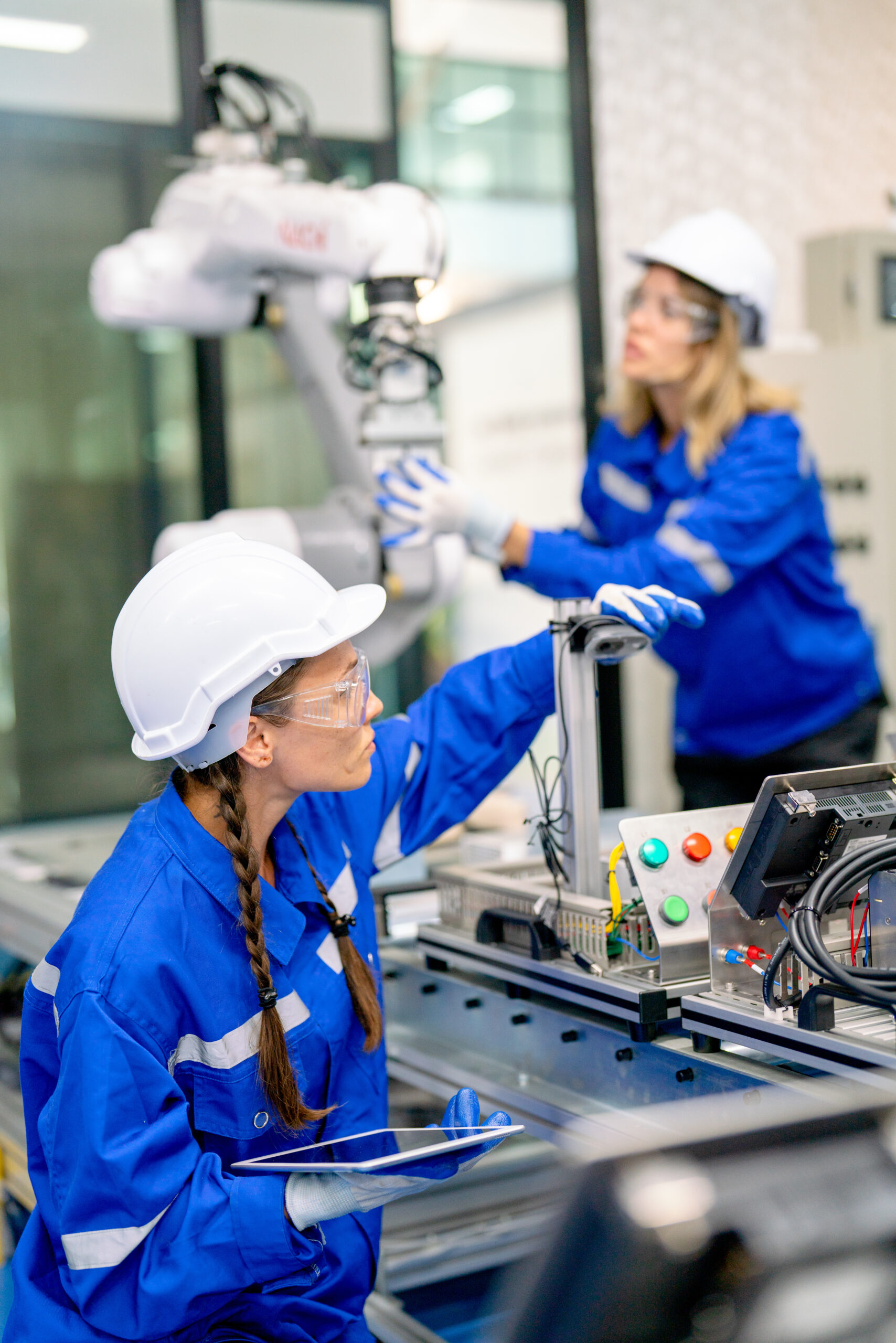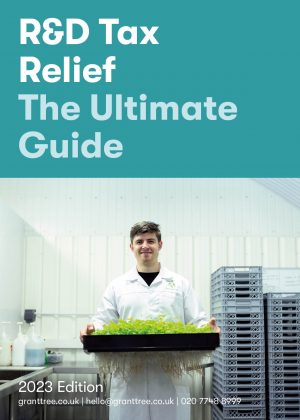R&D Tax Relief For Automotive Companies
Innovative companies in the UK’s automotive sector can recoup up to 33p for every £1 they invest in research and development work through the generous R&D Tax Relief scheme. Here’s what you need to know about R&D Tax Relief–who is eligible, which costs qualify for relief, and how GrantTree can help you maximise your upcoming claim.

Introduction
The UK automotive industry is teeming with innovation aimed at creating greener, safer, and more fuel-efficient vehicles.
Yielding new capabilities, features and systems, cutting-edge research and development occurs throughout the industry’s vast and diverse supply chain, from Original Equipment Manufacturers to Tier 1 and 2 suppliers.
Helpfully, much of the investment in innovation qualifies for R&D Tax Relief, a generous UK government subsidy that lets eligible businesses recoup a significant percentage of their development spending.
However, despite being active for more than two decades, the scheme’s grey areas, nuances, and potential pitfalls continue to prevent companies from identifying all eligible projects and qualifying expenses, depriving them of their full entitlement of relief.
Recent changes to the scheme have confused matters further, leaving left many businesses worried their next claim will not be fully compliant.
What is R&D Tax Relief?
R&D Tax Relief is a government scheme that supports automotive companies and other innovators by allowing them to recoup up to 33p of every £1 they invest in research and development work.
In the 2021 tax year, the R&D Tax Relief programme distributed £6.6 billion in tax reductions and cash credits to nearly 90,000 businesses. This funding has enabled qualifying businesses to conduct more development work, hire staff, and achieve ambitious growth targets without sacrificing equity or taking on debt.
R&D Tax Relief supports companies seeking to overcome scientific and technological obstacles. As a result, the scheme is ideally suited to automotive businesses, which regularly encounter these kinds of challenges during their development work.
R&D Tax Relief is available to a wide range of companies in the automotive space, from those developing whole vehicles to parts and components contributing to larger projects.
Get Answers Now!
Which automotive projects qualify for R&D Tax Relief?
To qualify for R&D Tax Relief, a project must look to overcome a scientific or technological uncertainty, meaning an obstacle to advancement that can only be overcome with methodical experimentation. Whether they are looking to increase engine efficiency and power, develop a new lightweight composite, or build a new cooling system, automotive companies face these kinds of obstacles on a daily basis.
Here are a range of examples of automotive projects that are likely to qualify for R&D Tax Relief.
- Advanced driver assistance systems (ADAS) development
- Aerodynamics and drag reduction research
- Autonomous vehicle testing and development
- Battery life improvement for electric vehicles
- Battery management system (BMS) development
- Design of new types of motors, such as axial flux motors
- Development of alternative fuel sources
- Development of fuel cell stacks for hydrogen vehicles
- Development of new engine technologies
- Electric vehicle charging infrastructure research
- Emissions reduction technology development
- Energy-efficient lighting technology development
- Hybrid powertrain development
- Lightweight composite materials for body and chassis
- Materials and coatings for corrosion resistance and durability
- Safety systems development, such as airbags and seat belts
- Testing and development of vehicle sensors and electronics
- Vehicle-to-grid (V2G) technology research
Which costs are eligible for R&D Tax Relief?
There are ten kinds of costs that are eligible for reimbursement under the R&D Tax Relief scheme. You can read the full list here in our dedicated blog. However, many of these costs are not especially relevant to automotive businesses. To give you more concrete guidance on what you can expect to claim for, we’ve put together the list below of eligible expenditures commonly incurred by companies in the automotive world.
Staff Costs
Salaries, wages, bonuses, and pension and national insurance contributions for staff directly (and sometimes indirectly) involved in R&D. Staff likely to be involved in qualifying automotive-related activities include:
- Advanced Manufacturing Engineers
- Autonomous Vehicle Engineers
- Battery Cell Scientists
- Compliance Specialists
- Electrical Engineers
- Materials Scientists
- Powertrain Engineers
- Project Managers
- Software Engineers
- Test Engineers
- Vehicle Dynamics Engineers
Prototypes and Trial Costs
Costs associated with designing, constructing and testing prototypes – be they whole vehicles or individual components – often qualify for R&D Tax Relief. However, if you are planning to sell your prototype, HMRC will classify it as a first-of-class product, and you will only be able to claim relief on costs associated with work to overcome scientific or technological uncertainty.
Consumables
Consumables are resources that are ‘used up’ in the R&D process. In the automotive sector, commonly-used consumables include parts, raw materials, chemicals like solvents and lubricants, fuel, gases and certain utilities, including water and light. Utilities are usually apportioned based on the percentage that is attributable to R&D and not other aspects of the business.
Automotive R&D and Subcontractors
Many automotive companies subcontract a portion of their development work – such as the production of a specific component or software – to third parties. Up to 65% of the cost of using a subcontractor is eligible for relief.
There are several caveats to this, however. For one, only companies eligible for SME R&D Tax Relief can claim relief for work subcontracted to another limited business. Another: eligibility for the scheme depends on who bore the financial and technical risk of the project, not necessarily who commissioned it.
You can read more about R&D tax and subcontractor expenditure here. If you want to understand whether your arrangements are eligible for relief, our specialists would be happy to advise you. Just get in touch.

Free Guide: The Ultimate Guide to R&D Tax Relief
R&D Tax Relief is a valuable resource for automotive innovators providing funding that fuels growth and turbocharges further development work.
However, preparing a fully-compliant claim that includes all of your eligible costs and projects is no simple task. To make it a little easier, GrantTree’s R&D Tax Relief specialists have published a comprehensive guide to preparing an accurate, maximised submission.

How GrantTree Adds Value to Your Claim
The R&D Tax Relief scheme is going through a period of unprecedented change. Funding for SMEs has fallen; reporting requirements are becoming stricter and more cumbersome; first-time claimants now have to submit a pre-notification form before they can access relief.
Companies must keep up with these changes if they want to avoid a long, damaging enquiry – a possibility that is becoming more and more likely now HMRC is accelerating its crack-down on non-compliant claims.
GrantTree can help. We have 12 years of experience filing and defending R&D Tax Relief claims for automotive businesses. In that time, we have helped more than 2,000 innovators access over £350 million in tax reductions and cash credits while saving their founders, CEOs, and financial executives valuable time they can reinvest in other areas of their organisation.
If you want to make sure you’re making the most of the R&D Tax Relief scheme while saving time and protecting your company from a compliance check, reach out to us. Our team is ready to help you succeed.
Case Study
What Our Clients Say
GrantTree’s service was fast and responsive. They identified costs that we missed and increased our claim size. We’re happy customers and recommend working with them.
We’ve worked with GrantTree for a few years now. They take the pain and complexity out of claiming R&D tax credits so we can focus on developing our product.
Being an environmental engineering company, we are very specialised; GrantTree used their extensive expertise to identify qualifying work and maximise what we could claim back.
GrantTree made the whole process of applying for R&D Tax Credits completely painless. Their extensive experience is invaluable in navigating the complex rules.
GrantTree has been a joy to work with! They really care about our product and what we do. Would highly recommend!
We were using a standard accounting firm, but they didn't understand our vision. Virtual reality is quite a new technology and not everybody gets it.
GrantTree was the perfect tax credits partner. They really understood our technology and R&D, which helped us claim for every penny possible.
Grant Tree's approach to R&D Tax Relief claims is a breath of fresh air. They take the weight off your shoulders, and do all the work of preparing the claim.
The money they have successfully claimed for us has played an important part in funding the growth of the business in a range of ways.
GrantTree has been great in helping us get R&D Tax Credits. Having never done this before, we were astounded by how easy and clear they made the entire process.
GrantTree helped us understand the concept and provided us with lots of guidance. I would be more than happy to recommend GrantTree to anyone.
The team were second to none in making the process as easy as possible and exceedingly helpful along every step. We look forward to working with them next year.
Without GrantTree, we would not have filed at all, and even if we had filed, we would not have maximised our claim in the way they managed.
We were previously working with another specialist when GrantTree approached us and were able to save us more than £10k in forecasted fees.
The value we have gained from GrantTree is significant to our business and helps us to invest appropriately in R&D. I would highly recommend the service to any company.
Turbocharge Your R&D Claim
Looking for help on your upcoming R&D Tax Relief claim? GrantTree’s specialists are standing by. Just drop us a line and we’ll be back in touch shortly.
